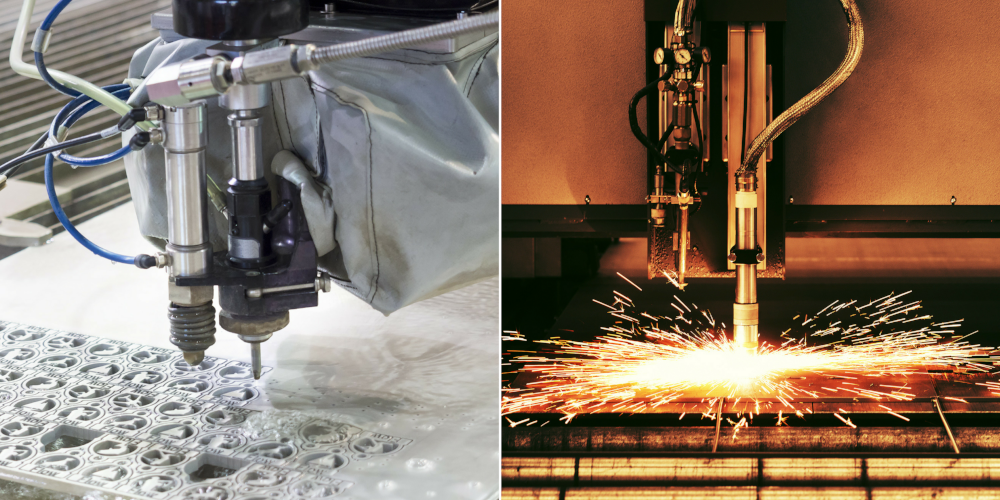There can’t be two more different methods than flame and waterjet cutting. Find out how the two compare in this blog.
Flame cutting is known by many names – Oxygen Cutting, Oxy-Fuel Cutting, Oxy Acetylene Cutting, Oxy Fuel Gas Cutting, Oxygen Burning, Steel Burning and the list goes on.
The process was established about 111-112 years ago and is a Thermo-Chemical Process requiring a source of intense heat, referred to as ‘Preheat’, and pure oxygen with a minimum purity of 99.5%. During flame cutting, the appropriate part of the material to be cut is raised to ignition temperature by an oxy-fuel gas flame.
Flame cutting is used for separating and shaping steel components and is carried out using a torch through which oxygen and a fuel gas, such as acetylene, propane or main gas, are passed.
The process can be used for cutting a number of materials with thickness up to 100 inches. However, there are certain restrictions, one of which is that the basic requirement that the oxide formed must have a lower melting point than the base material to be cut. A good example of a material that can’t be cut with flame cutting is aluminium.
Parameters that control flame cutting tend to vary depending on the material and surface condition of the plate to be cut, however, the most important factor would the the competency of the operator.
Unlike flame cutting, waterjet cutting involves no heat or distortion and can cut through virtually any material. The vast range of materials that a waterjet can cut is probably one of its main advantages over flame cutting. Another advantage is that the edge finish created is smooth, similar to sandblasted finish, rather than the rough edges left by flame cutting.
Find out everything you need to know about waterjet cutting in order to make an informed decision whether it’s the right method for your needs with our free download ‘An engineer’s guide to waterjet cutting’.

